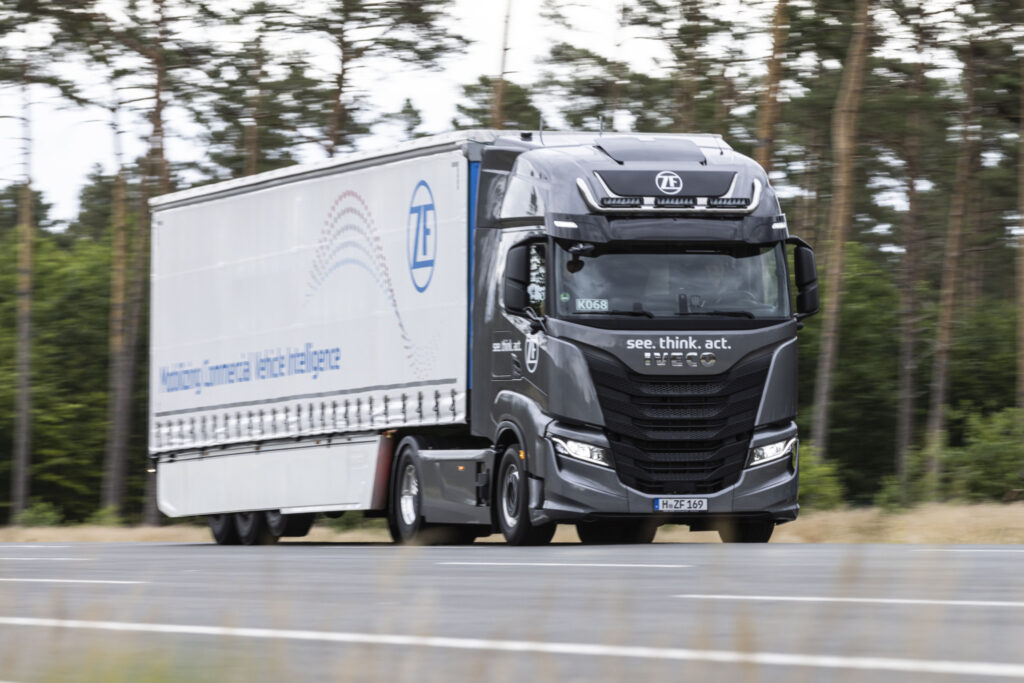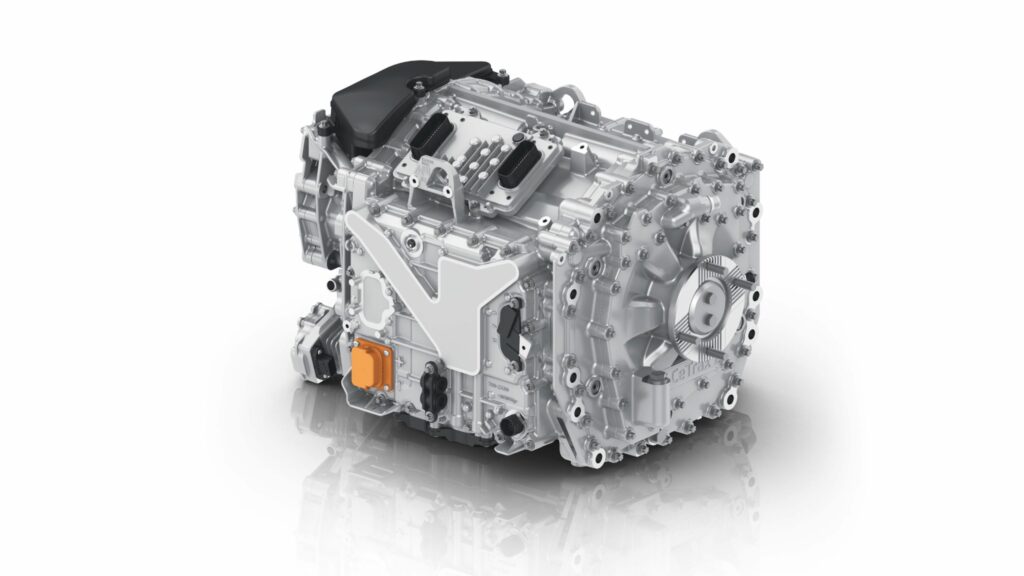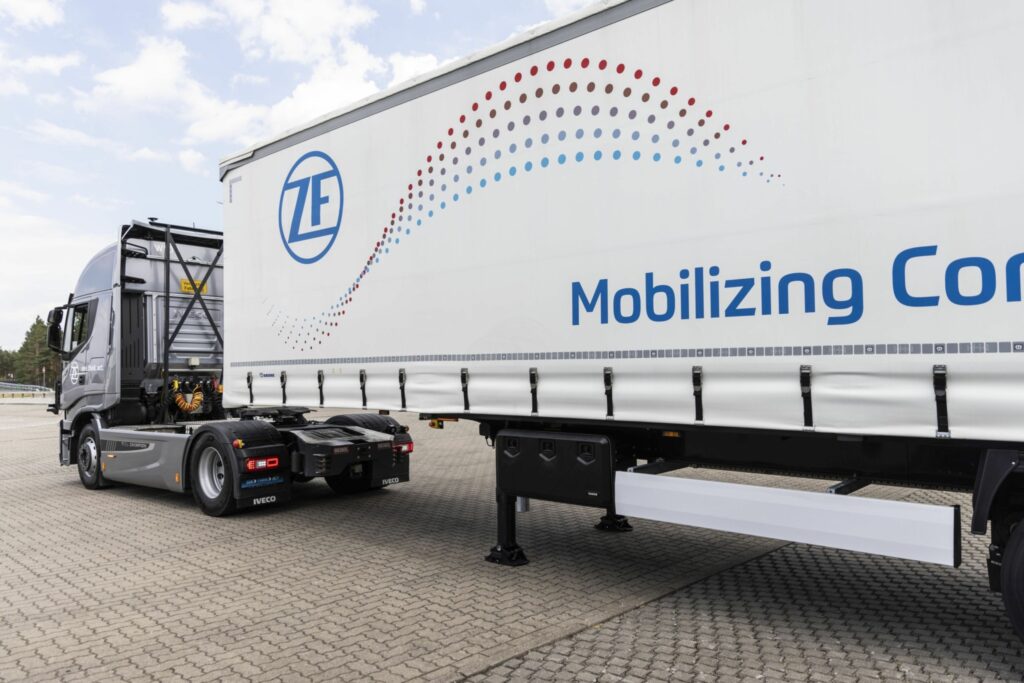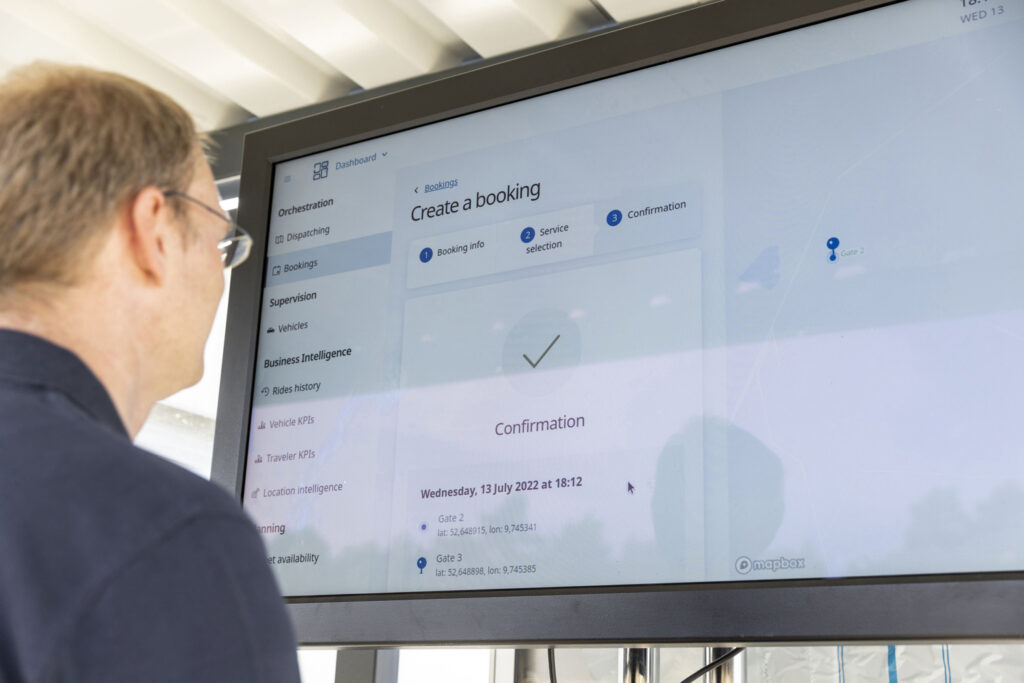ZF sets future course with new steer-by-wire systems
ZF is preparing for increasingly electric and autonomous commercial vehicles – and its path is now firmly established with help from new “steer-by-wire” systems that can replace traditional mechanical connections between steering wheels and axles.
The systems are scheduled to be applied to passenger vehicles in the coming year, but commercial applications will follow.
“ZF’s smart by-wire systems end the era of mechanical connections and enable a new era of vehicle control,” said ZF CEO Wolf-Henning Scheider, unveiling the news during the company’s global technology event in Germany.

Steer-by-wire systems can support highly autonomous vehicles during evasive maneuvers or when parking in confined spaces, he said. “It marks a breakthrough on the way to fully self-driving cars and trucks by adding new design and engineering freedom.” An example of that could include a steering wheel that retracts when vehicles operate autonomously.
While the steering would be tuned to mimic mechanical systems in typical situations, it can “more expertly” steer around obstacles than human drivers, ZF adds.
“We are showing that these technologies are safe,” Scheider said, referring to work with legislators in different jurisdictions including the U.S. “In North America I’m very optimistic that [steer-by-wire won’t face] any obstacles produced by legislation.”
Expanding ‘by-wire’ technology
The new approach to steering adds to the manufacturer’s offerings that already include brake-by-wire systems and electronically controlled suspensions.
When combined, such systems offer better vehicle controls to enable shorter stopping distances, greater freedom to maneuver, better stability at high speeds, and more range and efficiency, ZF says. Brake-by-wire, for example, can trigger the regenerative braking to recharge batteries and extend the range of electric vehicles.

Adding to ZF’s own electric vehicle portfolio is the new CeTrax 2 driveline that delivers a 360 kW output, the company says. Its integrated features include a stator with a hairpin design, a new cooling system, and silicon carbide-based inverter.
The latter offering draws from ZF passenger cars, and it won’t be the last time commercial products draw from lessons in the lighter vehicle segments.
“We have this motto: Develop once, deploy anywhere,” said Wilhelm Rehm, head of the commercial vehicle solutions division.
Integrating Wabco
ZF has also been actively deploying technologies acquired when it purchased Wabco for US$7 billion, integrating that business into a broader commercial vehicle solutions division.
“The successful integration of Wabco is already paying off,” Rehm said.
Close to 18% of ZF sales are now linked to commercial vehicles.
“We have established a powerful partner for the industry,” Scheider said, noting the Wabco integration also makes ZF less dependent on the company’s larger passenger car business.
When expertise surrounding supercomputers combines with brakes and steering systems that include smart actuators, ZF can control every sort of driving dynamic, he added.

Indeed, the company is focusing on more than hardware alone. ZF also unveiled an AI-powered transport-as-a-service platform known as Scalar that supports planning, routing and dispatching.
A next generation Autonomous Driving Open Platform Technology (ADOPT 2.0), meanwhile, will enhance potential automation in low-speed yard settings up to 20 km/h. ADOPT 3.0 will support hub-to-hub applications at speeds up to 80 km/h.
“The technology is available today already,” Rehm stressed.

There are still barriers to overcome, of course. One of those includes the ongoing shortage of semiconductors plaguing all OEMs.
“It has tremendously improved compared to the situation a half a year ago,” Scheider said, noting how the shortage has led ZF to adapt different sourcing strategies. “We think we have a good strategy to cope.”
It has also embraced a broad strategy that includes electronics, mechatronics and software.
“ZF,” Scheider said, “has set its course for the future.”
Have your say
This is a moderated forum. Comments will no longer be published unless they are accompanied by a first and last name and a verifiable email address. (Today's Trucking will not publish or share the email address.) Profane language and content deemed to be libelous, racist, or threatening in nature will not be published under any circumstances.